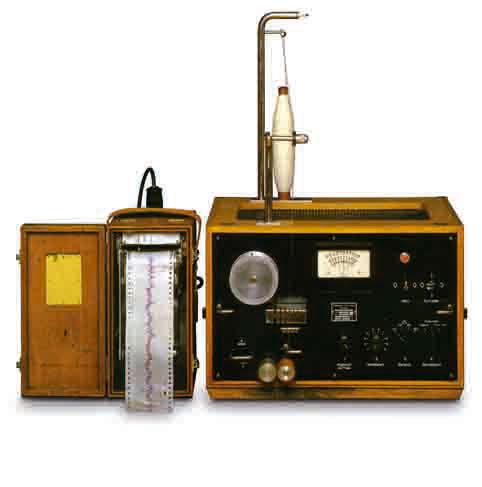USTER® Gazette: The Evolution of Unique Inventions of Textile Quality
The first generation of dryers listed in 1948 2017 is the 60th anniversary of the USTER® Gazette, let us review the origins of the world-renowned textile benchmarking tool. The best way to look back is to listen to the people who participated in it from the beginning to tell the story. Peter Hattenschwiler devoted his life to Uster. He introduced us to the unknown story behind this concept of success. At first, no one thought that it would be so famous. September 26, 2017 is Peter Hattenschwiler's 90th birthday. He was born in St. Gallen, Switzerland, and the city is also known as the "Lace Capital". In the 20th century, the demand for lace and embroidery came one after another, but the world was hit hard by the First World War and the global economic crisis of the late 1920s. During this period, fashion decoration is no longer sought after by people. Hattenschwiler's father, like many people, lost his job during the economic downturn and moved to the highlands of Zurich. The other textile industries there are still thriving. Even so, going to college is still not in Hattenschwiler's options. Instead, he went to the precision engineering department of Zilweg Uster as an apprentice. Zilweg Uster is a well-established company with a good reputation in the industry and has cultivated many mechanics. The company is located near the city of Uster and produces a variety of textile machines for the domestic market and exports to other countries. World War II ruined its export business, and Zilweg Uster began to enter other product areas, including coffee grinders, electric cheese grinders and radio equipment. A new generation of engineers is well-educated, they bring professional radio knowledge, and their business focus shifts from wartime defense activities to emerging electronic technology. Zilweg is a technology company that is constantly on the rise and has a large number of product inventions and patents. The cornerstone of the USTER® STATISTICS Hans Locher is a young radio operator and engineer with experience in radio signals. He made a whimsy and invented a machine for measuring yarn uniformity, which opened the way to innovation. At the time, Peter Hattenschwiler was his assistant. The local spinning mills suggested that they wanted to measure the yarn uniformity of themselves and their competitors, which undoubtedly gave Hans Locher the power. Spinning mills want measurement values ​​to help them accurately quote, improve yarn quality , and predict the "weavability" produced with their yarns. The first uniformity tester was based on a radio field and used a transmitter and a receiver. The yarn passes through the radio field and any defects can cause transmission fluctuations. In this way, the coarse details of the yarn can be measured by an electronic signal and displayed by an offset line. Visualizing yarn uniformity is a huge success, but the next step is even more important: using numbers to objectively describe the uniformity of the yarn. Zilweg calculates the area between the deviation lines by the principle of the face measuring device commonly used by architects to calculate the floor plan size. This is the basis of the Uster standard first published in 1957. Values ​​and benchmarks Hans Locher collects a large number of textile samples from Switzerland and abroad. With the help of H?ttenschwiler and another laboratory assistant, he measured these samples in the textile laboratory and developed quality standards. These standards are recognized by the Swiss official and international standardization organizations. “Hans Locher received an honorary doctorate in technical science from the Federal Institute of Technology in Zurich for this and other contributions. With these standards, it was the first time in the world that quality standards for textile cross-sections were met.†Hattenschwiler recalls. Sixty years ago, when these parameters were first published on the three-page paper of the textile magazine Melliand, the entire textile industry was sensational. Soon there are more needs, such as the hope of getting silk and hemp fiber related data. This extended standard was named the USTER® STATISTICS. In recent years, every time there are new yarns, the demand for the reference value of the yarn is increasing. As the variety of man-made fibers grows, such as nylon viscose fiber is increasingly sought after. Zilwegast continues to collect yarn quality values ​​around the world and receives more and more data. “Of course, we need a lot of manpower to craft the USTER® bulletin, but spinning mills and machine builders still get these reference values ​​for free,†says Hattenschwiler. The amount of data is too large, and it is very difficult to directly compare the quality parameters of the yarn, but there is also a new opportunity. The USTER® STATIST has turned into a benchmarking tool. The innovation is that we no longer list absolute values, but instead put the data into standard categories: 5%, 25%, 50%, 75%, and 95%. These are the percentage values ​​of the USTER® STATISTICS, which compares a specific parameter based on the quality level of each yarn type produced by the global spinning mill. There is no doubt that the USTER® STATISTICS are a great "invention", although the inventors did not intend to. In fact, the USTER® STATISTICS are produced because the industry is in urgent need of benchmark values ​​to compare yarn quality. And the continuous development according to industry demand is the secret of the success of the USTER® Gazette in the past six decades. “We are very happy to be able to invent the USTER® STATISTICS because it was a genius invention at the time and it also solved the actual problem. Even so, we did not expect this invention to have such a significant impact on the company. Become a technology leader," Hattenschwiler said. 100% Nylon Raw White Yarn,Nylon Yarn,Nylon Pop Yarn,Nylon Raw White Yarn ZHANGJIAGANG WELLHOW TRADING CO., LTD. , https://www.wellhowyarn.com
